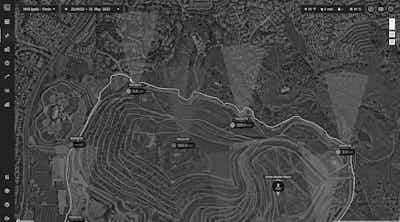As populations continue to grow worldwide, the role of landfills becomes increasingly crucial in managing the ever-expanding volumes of waste generated by human activities. Landfills serve as essential infrastructure for the disposal and containment of solid waste, providing a solution to the challenge of waste management in urban and rural areas alike.
They play a vital role in safeguarding public health and the environment by preventing the indiscriminate dumping of waste, controlling pollution, and minimising the risk of disease transmission. Additionally, landfills contribute to the conservation of natural resources through practices such as waste-to-energy generation and recycling initiatives, thereby supporting sustainable development efforts amidst the pressures of population growth.
Unpleasant odours can create a major rift between facilities and nearby residents
Communities residing near landfills often face significant challenges, primarily stemming from the persistent odours emanating from these sites. The foul smells can permeate the air, making outdoor activities unpleasant. There are also concerns about potential health impacts, particularly for individuals with respiratory conditions. Addressing these odour issues requires proactive measures from landfill operators, local authorities, and community stakeholders to mitigate the impacts and ensure a healthier and more livable environment for all.

The frustration and complaints from nearby communities on landfills can fuel negative media portrayals, with headlines like "Foul Odour from Landfill on HWY52" Such bad publicity paints landfill operators as villains, making it difficult to gain public trust. The consequences? Public opposition fueled by bad press can make it harder for landfills to get permits for expansion or upgrades, hindering the landfill's capacity to meet growing waste management needs.
Can Landfills use air quality data to manage odour and empower communities?
Air quality data plays an important role in managing odour at landfills and other solid waste sites. In addition, it is a crucial tool in assessing the potential impact of landfill emissions on nearby communities and developing effective mitigation strategies.
One of the main uses of air quality data in relation to landfill odour management is to monitor and track levels of pollutants such as hydrogen sulfide (H2S) and volatile organic compounds (VOCs). These odorous pollutants are often emitted from decomposing waste at landfills and can cause unpleasant odours in surrounding areas.
However, landfills can harness the power of air quality data to effectively manage odour emissions and empower nearby communities. By implementing real-time air quality monitoring systems capable of detecting odours at low concentrations, landfills gain immediate insight into potential issues.
Weather forecasts can also be utilised to trace the path of odours. Additionally, integrating weather forecasting data into odour management systems further enhances predictive capabilities. By targeting mitigation efforts more accurately, disruptions to surrounding communities can be minimised. This could allow landfills to work with communities on solutions like improved odour control systems. Data becomes a bridge, turning frowns into informed neighbours.
Omnis: A powerful solution combining air quality data and weather forecasts for odour management at landfills
Omnis acts as a real-time data hub for both environmental health and community relations. It can monitor factors like gas levels, temperature, and moisture. Here's how it empowers landfills to address community concerns:
Real-time Monitoring: Omnis continuously tracks key factors like real-time emission levels, temperature, and moisture. This allows for pinpointing the exact source of odours in real-time, enabling swift intervention before residents are even aware of an issue.

Weather Forecasting: By integrating weather data, Omnis can predict how wind patterns will disperse odours. This allows landfills to proactively take steps to minimise the impact on nearby communities, even before high-risk odour days arrive.

Trajectory Modeling: Omnis uses real-time data and weather forecasts to model the trajectory of the odour plume. This provides irrefutable evidence to help determine if the landfill is truly responsible for the odour, allowing for targeted solutions and fostering trust with the community.

Find out how Omnis empowers can empower your landfill to become responsible environmental stewards while building strong relationships with your neighbours today.
